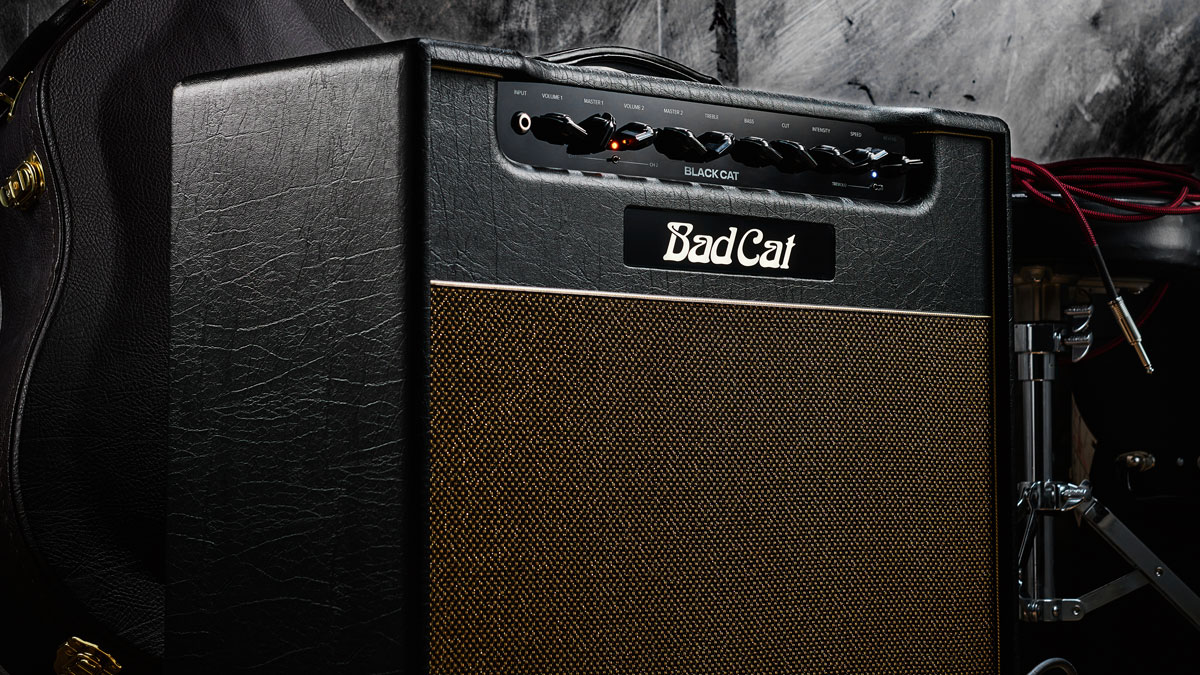Guitar World Verdict
The new improved Black Cat is currently one of the best tube amps on the market, no matter the price.
Pros
- +
Well-made.
- +
Good-looking.
- +
Exceptional tone to fit a wide range of musical genres. Reasonable price for top-drawer USA-made amp.
- +
Using just five tubes keeps maintenance costs down.
Cons
- -
A heavy lift.
You can trust Guitar World
Founded at the turn of the millennium, Bad Cat’s original mission was to fill a hole left in the market for high-end guitar amplification following the temporary demise of Matchless in 1999.
It’s well known that Matchless co-founder and designer Mark Sampson helped out with some initial design and fabrication, hence in the very early days there was a close similarity between Matchless and Bad Cat products. But Bad Cat’s range quickly diverged with innovative features and new models, including the K-Master circuit and the well-received Hot Cat and USA Player amplifiers.
Sampson left to explore new horizons while Bad Cat carried on, and the company has recently relaunched its brand with an entirely new range of updated heads and combos, created by owner John Thompson and CEO and designer Peter Arends. Here, we’re looking at the highly anticipated reincarnation of one of Bad Cat’s first amplifiers, now available as a 1x12 combo amp: the Black Cat.
This is a handsome, traditionally styled amp featuring a front-facing control panel surrounded by black vinyl and gold piping, with an illuminated logo atop the trademark gold-sparkle grille. Underneath the vinyl, there’s a Baltic birch plywood cabinet supporting a single custom-made 12-inch Celestion loudspeaker and a robust aluminium chassis with two oversized transformers and a choke.
Inside the chassis, most of the electronics are mounted on one large high-quality PCB, including the front-panel controls and preamp valve sockets. There’s a mix of through-hole resistors and capacitors, together with three relays and a couple of surface-mount chips for the Black Cat’s digital reverb.
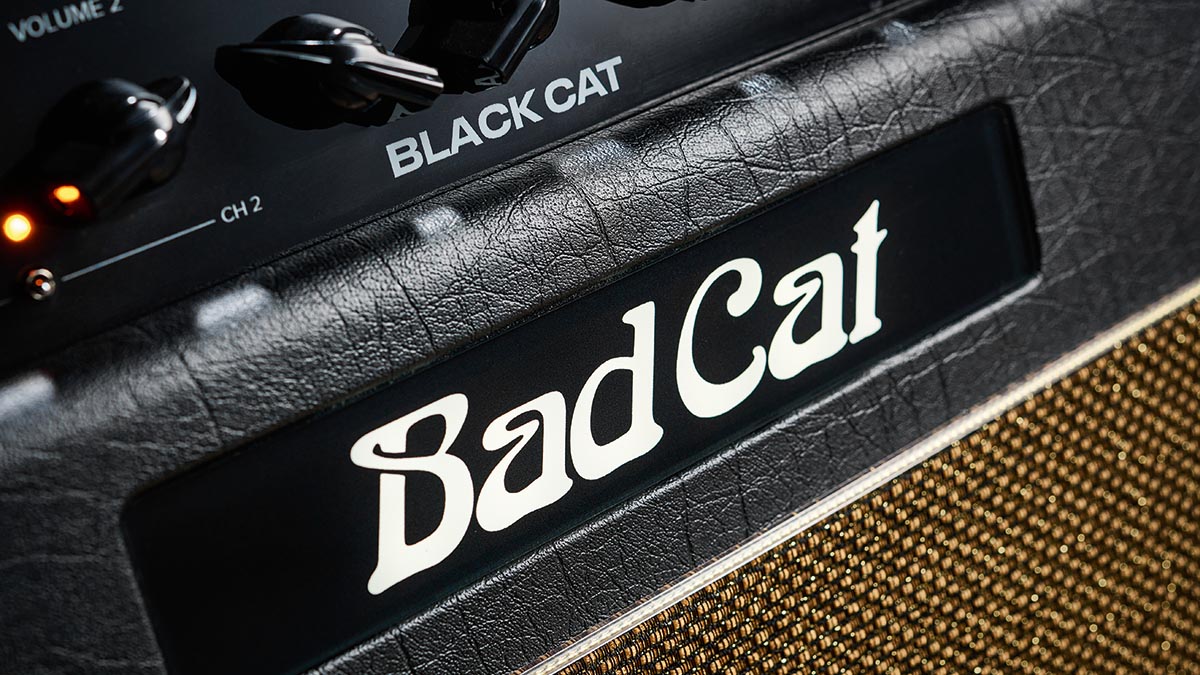
Smaller boards support the input jack, rear-panel jacks and sockets for the Black Cat’s cathode-biased pair of EL84-Rs, which produce around 20 watts. Soldering and wiring is clean and neat; lots of careful cable twisting reduces noise.
The Black Cat is a two-channel design, although it’s quite different from the original amplifier with two pairs of gain and master volume controls sharing treble and bass EQ knobs.
There’s also a global Cut tone control sitting on the preamp output, which rolls off the highs as the chickenhead knob is turned clockwise – a subtle nod to Vox’s AC30, which was part of the inspiration for the original Black Cat design and its ancestors. Lastly, there are speed and intensity controls for the Black Cat’s bias‑modulated tremolo effect and a level control for the reverb.
The signature Bad Cat tone is all about clarity and string separation, which is immediately obvious on Channel 1
On the rear panel, you’ll find a pair of send and return jacks for the buffered effects loop and a comprehensive choice of speaker outlets, with five jack sockets offering four-, eight- and 16-ohm options, together with a fixed level line out suitable for driving external power amps or IR loaders.
There’s also a jack socket for the Black Cat’s two-button footswitch, which toggles the channels and tremolo effects. Status LEDs on the footswitch are duplicated on the front panel as two small toggle switches for when the footswitch isn’t needed.
Overall, it’s clearly built to last, with very high-quality components and classic styling, looking the part for stage, studio and home use.
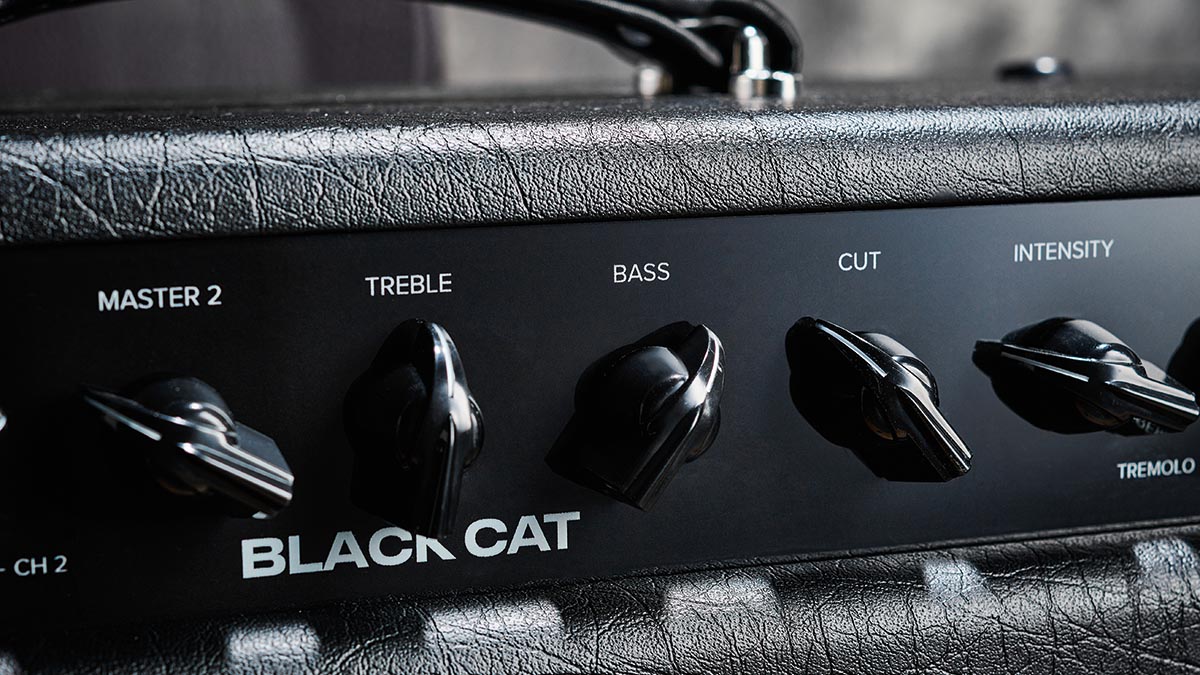
Feel & Sounds
We tried out the Black Cat with various guitars, including an old Strat, a borrowed original 1972 Les Paul Custom and a superb Gibson Custom Shop ’63 ES-335 replica. The Black Cat purrs into life with practically zero hiss and background hum, thanks to a DC heater filament supply and transformers at least double the size of those typically found in other similar amps.
The plus-size transformers mean significantly reduced mechanical hum, making the Black Cat ideal for low-volume use at home, either for practice or recording.
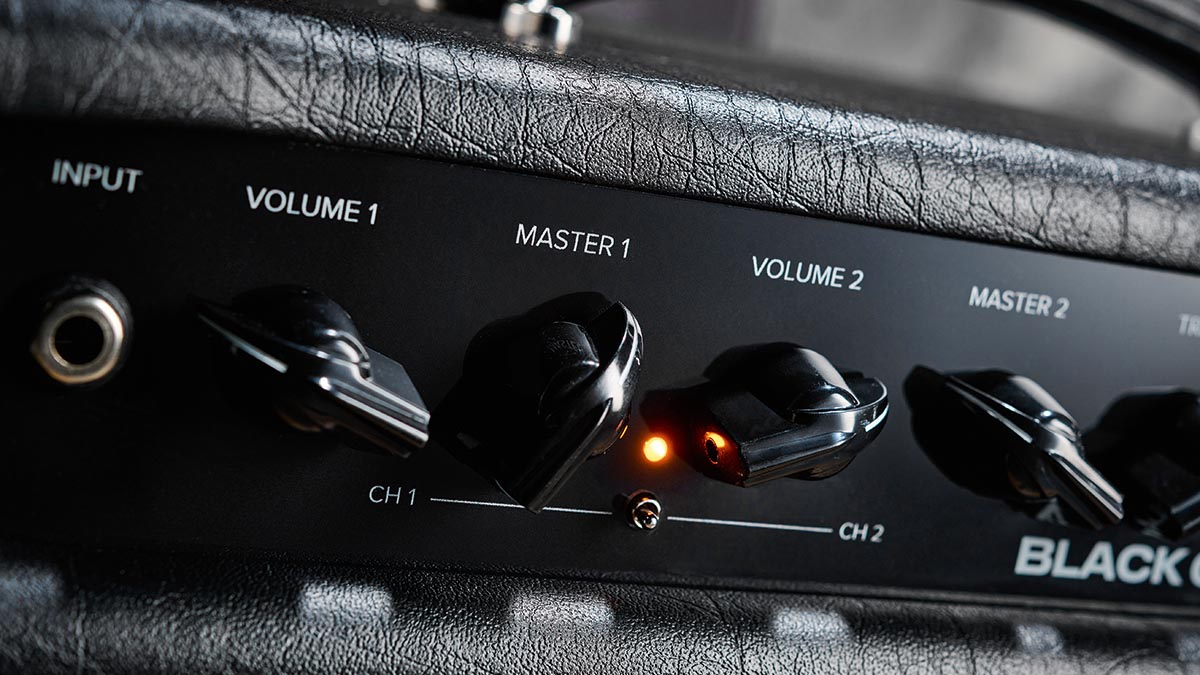
“Transformer certification is one of the biggest hurdles a manufacturer has to overcome,” explains Peter Arends, “so it made sense to certify just one set of transformers and use them for all our new models. The increased transformer size on the smaller amplifiers and the reduced mechanical noise is a side benefit of that.”
The signature Bad Cat tone is all about clarity and string separation, which is immediately obvious on Channel 1’s range of pristine cleans and classic ’60s chime. With the master volume turned up high and the gain control all the way up, there’s a very pleasing mild crunch that works really well with beefy humbuckers, nailing the mid-’60s Blues Invasion tones of The Beatles, Humble Pie and The Stones.
Back the gain off to around half and you’ll find the jangly harmonics of early Byrds and Creedence Clearwater Revival, while setting it to just under half with a Strat puts you firmly in Shadows and Ventures territory, enhanced by the Black Cat’s onboard reverb and bias tremolo.
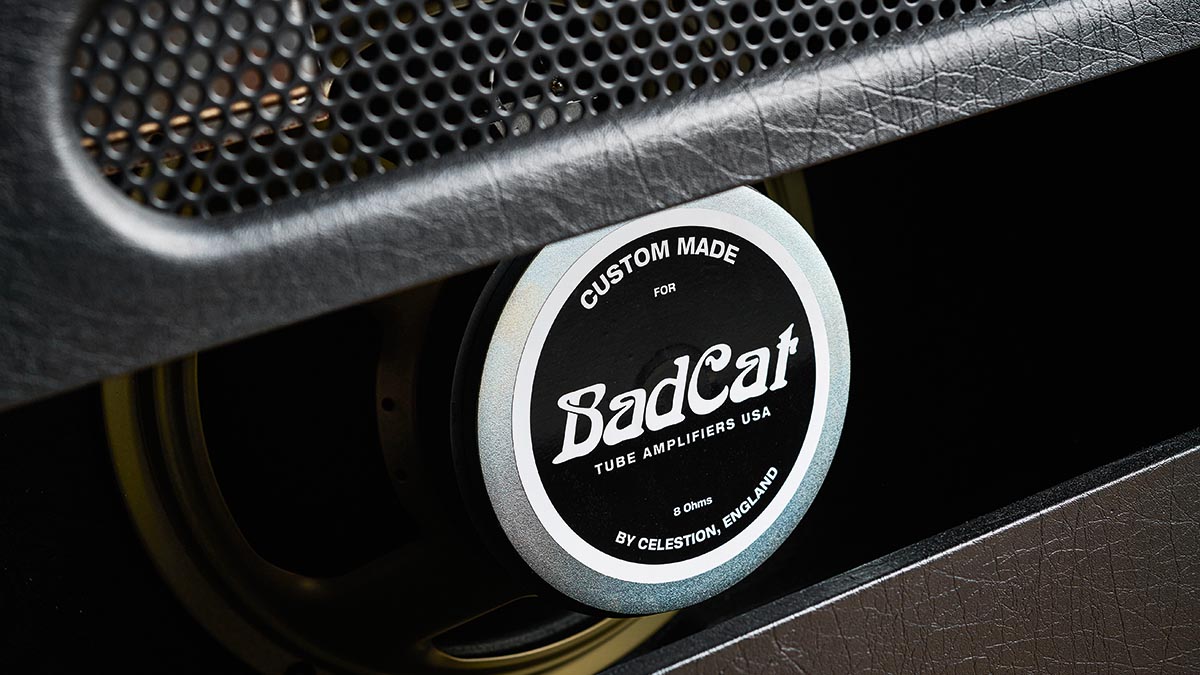
The tone controls do take a little getting used to, but after a few minutes they quickly become intuitive. “The tone network is a passive EQ, with separate operating points for the clean and overdrive channel,” continues Peter. “The treble control works like a mid bell/scoop control, where turning it anti-clockwise emphasises mids, while turning it clockwise emphasises bass and treble frequencies.
The bass control works like a post/mastering EQ, so the amount of low frequencies doesn’t change the characteristics of the signal. The effectiveness of the controls is due to the headroom of the circuitry, enabled by the EQ’s position and matching it to the surrounding stages.”
After the main EQ, the Black Cat’s Cut knob acts as a final edit on the tone before the signal reaches the output stage, progressively rolling off highs as the knob is turned clockwise.

Switching to Channel 2 keeps the same complex harmonics and string separation, with extra gain for crunch and solos. There’s more than enough drive here to make even the relatively low-powered single coils of our Strat sing, while the claws really come out with a decent humbucker.
The Black Cat’s Treble control is particularly effective on this channel, letting you dial in just the right amount of scoop to achieve a perfect midrange balance in seconds. With Channel 2’s gain turned up to around two o’clock and the master volume pushing the EL84s to the edge, the lead sounds are exceptional, seamlessly blending American and British influences with easily controlled feedback and an addictive articulation that tracks every nuance of string attack and vibrato.
Our borrowed ’72 LP Custom sounded particularly impressive, the Black Cat nailing everything from Aerosmith and Bryan Adams to Sex Pistols and Peter Frampton, all with pinpoint accuracy.

The tremolo and reverb effects are equally rewarding to use, with a well-judged range of speed and intensity from the trem and a warm medium hall decay that’s ideal for subtle ambience or full-on surf.
“The effects work really well on both channels,” Peter agrees. “The tremolo is an easy effect to do, but not so easy to do well. We spent a lot of time tuning it to get the right feel across both channels. Same with the reverb, where a lot of time went into getting the levels right so the reverb doesn’t sound harsh or overloaded and you can use it all.”
Used with a live band, the Black Cat’s 20-watt output was more than enough to cope with an averagely loud drum kit and an enthusiastic audience, while the low noise floor works very nicely with pedals. We used a small pedalboard with some typical wah, drive, delay and modulation effects plugged into the input jack, with impressive results.
Verdict
It’s great to see Bad Cat back again with an exciting new range of amps that take full advantage of the cost-effectiveness and reliability of modern manufacturing and components, without compromising the coveted tones of the originals.
The original Black Cat signature voice is still here, in addition to an expanded range that covers most musical genres, though it’s particularly well suited to modern country, blues, roots and classic rock where the complex harmonics and highly responsive dynamics are equally rewarding to subtle nuance or savage attack.
Aimed squarely at professionals and serious amateurs, the Black Cat clearly isn’t an impulse buy. However, set against direct competition costing twice as much or more, we reckon it’s actually very good value for money, with superlative tone and response, and low noise performance that’s hard to beat, even at this rarefied level.
It’s worth remembering the magic of the electric guitar came from very simple analogue beginnings and sometimes one good tube amp is all you need to rediscover that enjoyment
As for build quality, if you want to make consistently great-sounding amplifiers then modern high-quality PCBs are the only way to go, with obvious savings in assembly costs translating into more affordable products. There are no special components on the Bad Cat’s board, so future servicing won’t present any problems, either.
In the volume stakes, we think the lower output wattage actually makes the amp easier to drive, while the Black Cat’s 1x12 format is ideal for most gigs. Okay, it’s no lightweight, but it’s far easier to lift and carry compared with its 2x12 ancestor.
In today’s market where we’re increasingly overwhelmed by digital products, it’s worth remembering the magic of the electric guitar came from very simple analogue beginnings and sometimes one good tube amp is all you need to rediscover that enjoyment.
Specs
- PRICE: $2,099 / £1,899
- ORIGIN: USA
- TYPE: Valve preamp, valve power amp
- VALVES: 1x JJ ECC83S, 2x EH12AX7, 2x EL84-R
- OUTPUT: 20W RMS
- DIMENSIONS: 605 (w) x 265 (d) x 485mm (h)
- WEIGHT (kg/lb): 22/48
- CABINET: Baltic birch ply
- LOUDSPEAKERS: 1x12” Celestion Bad Cat custom design, made in UK
- CHANNELS: 2, footswitchable clean and overdrive
- CONTROLS: Volume 1, Master 1, Volume 2, Master 2 Treble, bass, cut. Tremolo intensity and speed, reverb level
- FOOTSWITCH: 2-button footswitch (supplied) changes channels and toggles tremolo function
- ADDITIONAL FEATURES: Buffered series effects loop, bias-modulated tremolo, studio-quality digital reverb, fixed level line out
- OPTIONS: None
- RANGE OPTIONS: Also available as a head for £1,799, with a matching 1x12 speaker cabinet for £549
- CONTACT: Bad Cat Amplification
Nick Guppy was Guitarist magazine's amp guru for over 20 years. He built his first valve amplifier at the age of 12 and bought, sold and restored many more, with a particular interest in Vox, Selmer, Orange and tweed-era Fenders, alongside Riveras and Mark Series Boogies. When wielding a guitar instead of soldering iron, he enjoyed a diverse musical career playing all over the UK, including occasional stints with theatre groups, orchestras and big bands as well as power trios and tributes. He passed away suddenly in April 2024, leaving a legacy of amplifier wisdom behind him.
